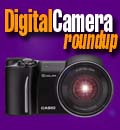 Storage for digital images has generally become known as "digital film." Like "real" film, digital film comes in many shapes and sizes, and picking the right one can be just as confusing. When I was a kid I was fascinated by all those colorful little boxes of film at the checkout counter. I tried to understand the difference between the 35 millimeter film from Kodak and Agfa (Fuji wasn't a factor yet), whether that small 110 format could actually make good pictures, and what was inside those Kodak Instamatic cassettes. Later I learned about film speeds and the subtle nuances between brands. (I never did figure out, though, if those bargain packs with three 24 picture rolls and an extra 12 picture rolls are actually a better buy then two 36 picture rolls.) How does all of this compare to buying digital film?
Storage for digital images has generally become known as "digital film." Like "real" film, digital film comes in many shapes and sizes, and picking the right one can be just as confusing. When I was a kid I was fascinated by all those colorful little boxes of film at the checkout counter. I tried to understand the difference between the 35 millimeter film from Kodak and Agfa (Fuji wasn't a factor yet), whether that small 110 format could actually make good pictures, and what was inside those Kodak Instamatic cassettes. Later I learned about film speeds and the subtle nuances between brands. (I never did figure out, though, if those bargain packs with three 24 picture rolls and an extra 12 picture rolls are actually a better buy then two 36 picture rolls.) How does all of this compare to buying digital film?
First of all, there are several different formats and it's hard to say which one will win. Some cameras come with built-in storage and you don't have to worry about memory cards, but most of those cameras are at the low end of the spectrum. A couple of the more expensive cameras have both internal storage and a memory card slot. That might come in handy when you forget to bring along a card.
In the early days of digital photography, some of us thought that we might perhaps be able to use our PC Cards in digital cameras as well. However, almost no one ever used that standard for digicams. It's probably because PC Cards are too big, although the size of a floppy disk didn't keep Sony from successfully using it in their Mavicas. It's really no big deal because the storage capacity of memory cards keep growing. One of the old two or four MB cards from my Newton days wouldn't hold many pictures.
Speaking of floppy disks, Sony was actually onto something there. Floppy disks are cheap, you can get them everywhere, and even though they only hold 1.44MB of data, that was enough for a whole bunch of compressed 640 x 480 pictures. The advent of the multi-megapixel cameras, however, spelled doom for the floppy and Sony is now gradually replacing the floppy-based Mavicas with Memory Stick CyberShots (see review on page 58).
I am not sure yet how I feel about the Memory Stick format. Looking somewhat like a stick of Wrigley's chewing gum, Sony's been using it in more and more of their consumer electronic devices, like several of its video cameras and even the new Clie PDA. The two Sony CyberShots we reviewed in this and the last issue of Digital Camera came with very small capacity Memory Sticks. A 4MB stick can't even hold a single non-compressed high resolution TIFF image. One of the things I like about the Memory Stick format is that the slots are spring-loaded. Press on the stick and it pops out. That's much better than trying to extract a PC Card or a Compact Flash card.
Smart Media cards have been around since the beginning of digital photography. They don't take much space because they are so thin but I am forever afraid of damaging that large contact area on their side. It's probably an irrational fear as I have never had a Smart Media card go bad on me. Still, it is not my favorite format and I wouldn't be surprised to see it fade away.
Most digital cameras today seem to use CompactFlash cards. Though they have roughly the same footprint as Smart Media cards they feel much more robust. They don't bend or flex, and the contacts are inside the card where you can't touch them. When CompactFlash cards first arrived on the scene a few years ago, most people wondered why we needed this smaller version of the PC Card. At that time the memory capacity of CompactFlash cards was limited and few devices had slots for them. That has changed and the CompactFlash format is now used not only for storage, but also as an adapter for all sorts of peripherals. You can actually get a digital camera with a CompactFlash interface that pops into a Casio PDA. The best thing about CompactFlash is the vast increase in the format's storage capacity. Two years ago the largest card I had for my CoolPix 900 was a 16MB SanDisk. Today I have a variety of 48 and 64MB cards from Lexar and Simple Technologies, and even a 224MB card from Delkin. That means that storage capacity has kept pace with the higher resolutions in digital cameras. True, even a 64MB card can only hold a few non-compressed images, but as long as you're saving your pictures in the JPEG format, that card can hold dozens of high res images and several hundred standard VGA images. Note, though, that today's highest capacity cards use the "Type II" form factor which means that they are slightly thicker and won't fit into a standard CompactFlash card slot. That means I can't use the 224MB Delkin card in my Nikon CoolPix 990. At this point, only a few digital cameras have Type II slots. Those cameras can accommodate the largest capacity cards on the market, and also IBM's remarkable MicroDrive. The MicroDrive is an entire 340MB hard disk in a CompactFlash card, and it usually works like a charm in digicams. IBM recently announced a 1GB MicroDrive that's quite expensive, but you're not going to run out of room for pictures for a long time with one of those babies in your camera.
There is one card standard that isn't being used yet for digital cameras although it has great potential. That format is Handspring's Springboard. The Springboard standard does not impose limitations on length or thickness. As a result, Springboard modules are only limited by the imagination. There are already MP3 player, digital camera, radios, wireless modem, and GPS Springboard modules available for the Handspring Visor PDA. Imagine a digital camera with a Springboard module that not only lets you store images but also plays music and wirelessly sends your pictures to your PC! It may happen.
There is one area that I haven't touched on in this discussion of storage formats for digital cameras, and that is the differences in speed. The ability to write an image as quickly as possible to a storage card becomes ever more important as digital photographers demand the same features and convenience they get on regular cameras. Companies like SanDisk, Lexar, and others are spending millions to speed up data transfer and the competition between those companies is fierce. Since the time between pictures depends on more than just the speed of the memory card, many consumers probably will buy the least expensive card they can find. But speed does matter when you're serious about digital photography, and those who make the fastest "digital film" will definitely have a market advantage.








